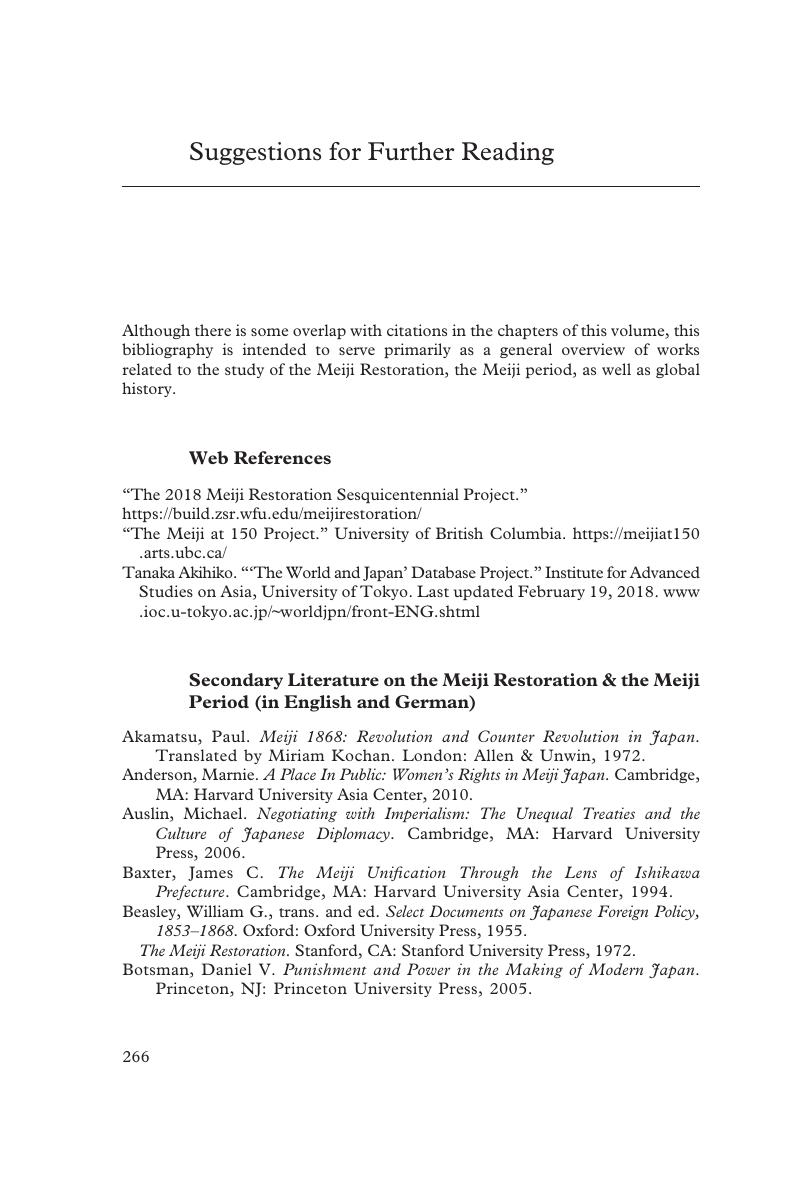Suggestions for Further Reading
Published online by Cambridge University Press: 14 April 2020
Summary

- Type
- Chapter
- Information
- The Meiji RestorationJapan as a Global Nation, pp. 266 - 276Publisher: Cambridge University PressPrint publication year: 2020



